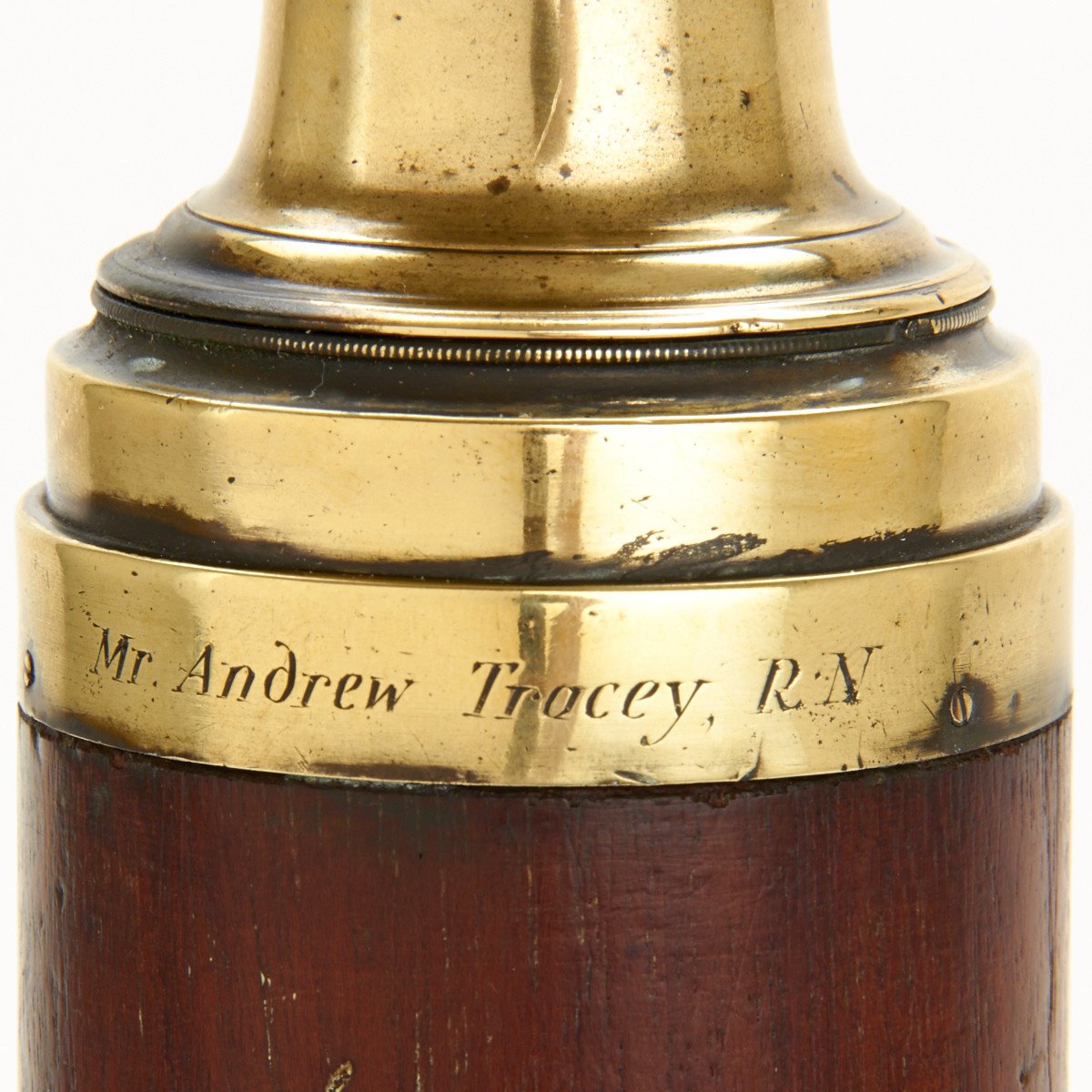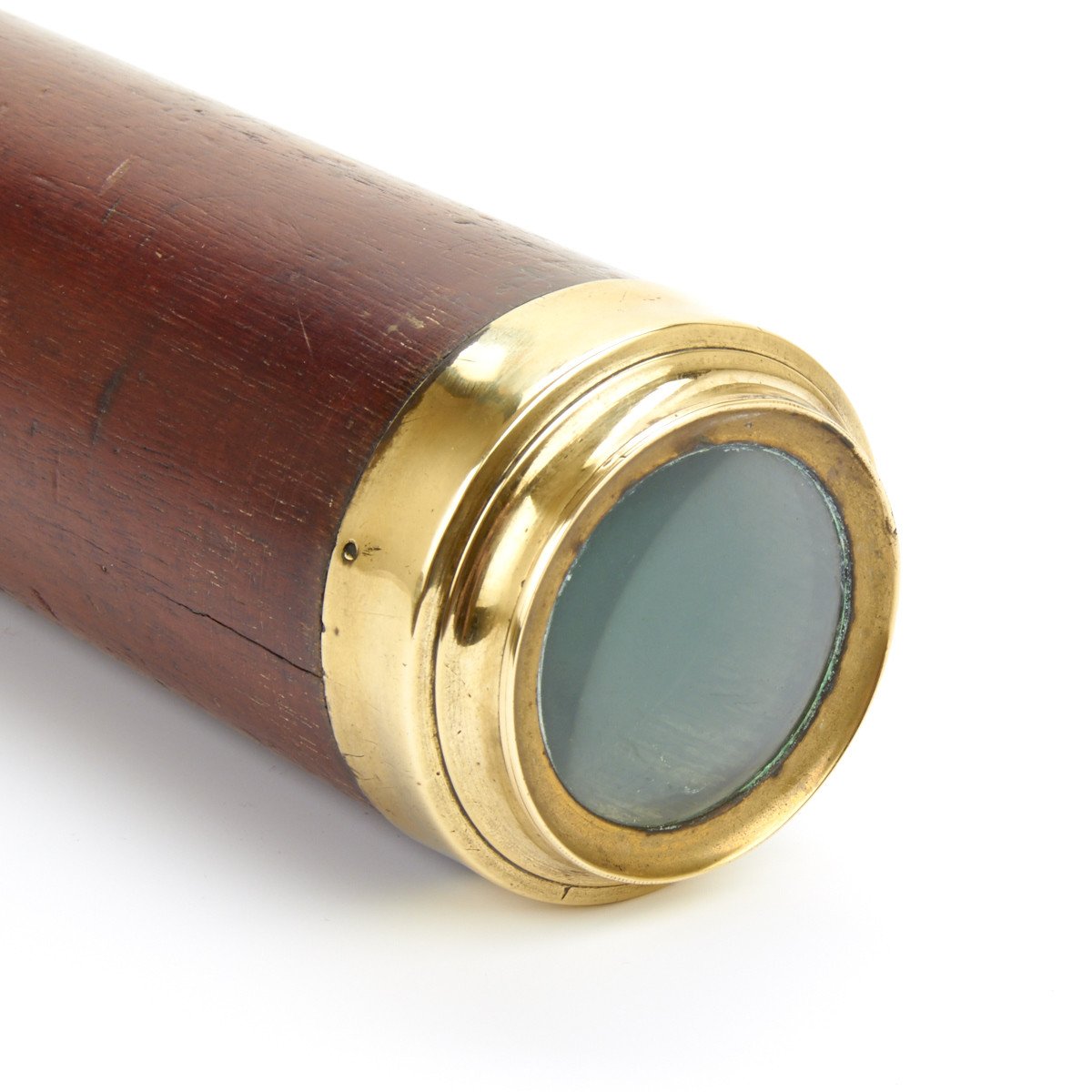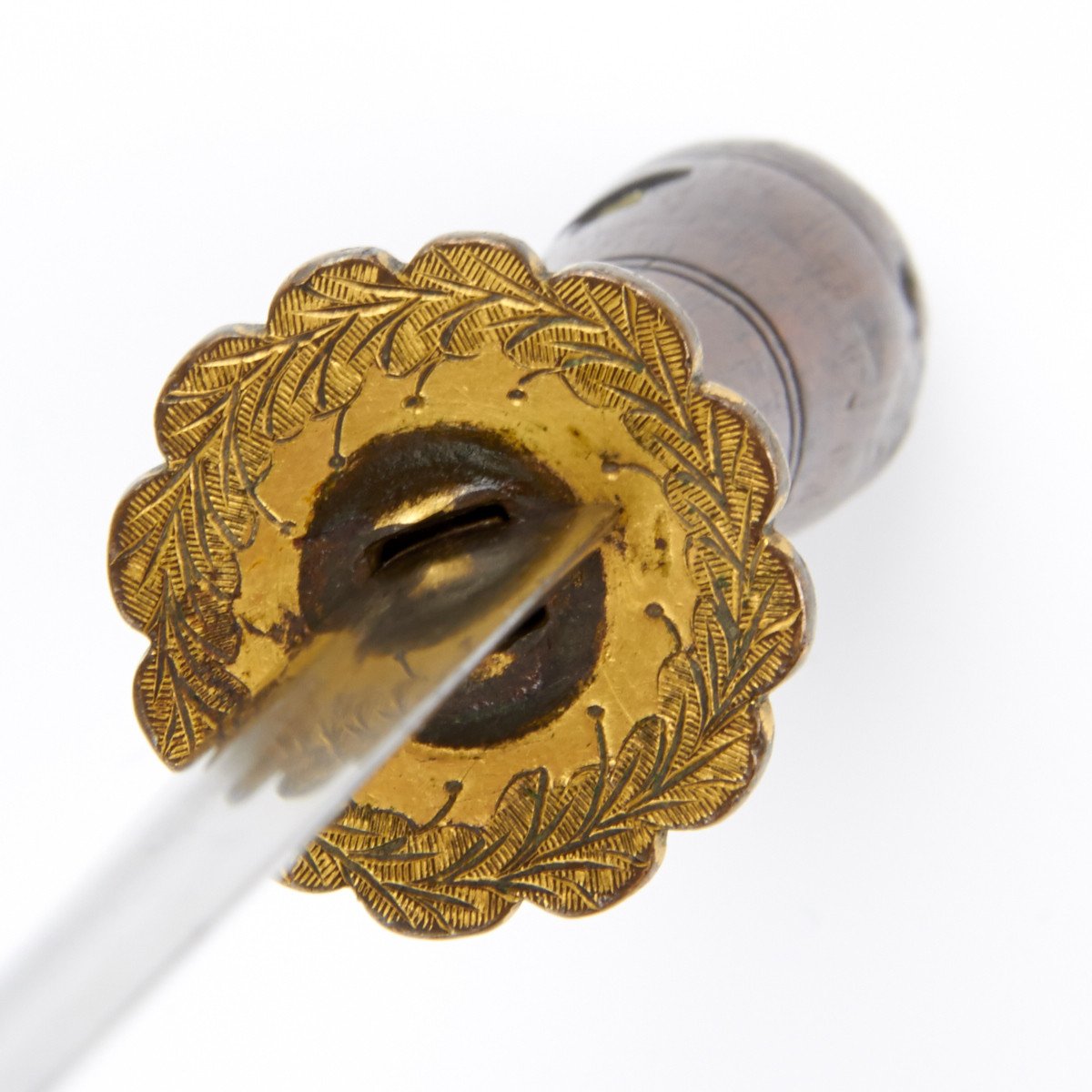Original 1794 British Naval Captain of HMS Majestic Set of Testimonial, Telescope, Dirk Original Items
$ 1.795,00 $ 448,75
Original Items: Only one Set Available. Obtained from a private English Naval collection of the Napoleonic era, originally obtained many years ago from the Tracey Family, is a hand written officer’s testimonial written by Captain Charles Cotton of H.M.S. MAJESTIC a 74-gun ship of the line attesting to the abilities of one, MR. ANDREW TRACEY.
Andrew Tracey was ship’s master from 16th March 1793 until the 16th March 1794. H.M.S. Majestic, a 3rd Rate Ship of the Line, was built in 1785 by Adams and Barnard of Depford, was 170′ long with a 47′ beam. She was broken up in 1816.
Together with this framed and glazed signed testimonial comes a brass mounted, wood covered Naval Officers telescope of the period, 20 inches in overall length when closed, and 35 inches in overall length when fully extended. The brass collar bears an inscription that reads “Mr. Andrew Tracey, R.N.”
Also included is a seamans dirk measuring 11 ¾ inches in overall length with a 7 ¾ inch blade. The brass mounted, turned wood hilt has the carved initials “A.T.” presumably for Andrew Tracey. The dirk was an easily concealed covert and deadly weapon.
Andrew Tracey is recorded in British Naval annals as a ship’s master but little else can be found. However Captain Charles Cotton, the signer of the hand written testimonial had an illustrious career.
Born in 1753, third child of Sir John Hynde Cotton, joined the Royal Navy in 1772. He participated in the Boston Campaign in 1775 aboard H.M.S. Niger and the Long Island Campaign in 1776.
In 1777 he took command of a floating Battery H.M.S. Vigilant off the Chesapeake in 1777 and was promoted Lieutenant. In 1779 he was promoted Post Captain aboard H.M.S. Boyne.
In 1782 Cotton commanded H.M.S. Alarm at The Battle of the Saints against the French in the
Caribbean Sea. In 1795 while commanding H.M.S. Majestic having fought at “The Battle of the Glorious 1st of June” in 1794, Cotton inherited the Baronetcy from he deceased father. In 1797 he was promoted to Rear-Admiral, in 1802 to Vice-Admiral and after Trafalgar, in which he did not take part, he served in the Peninsula War off Portugal. In 1810 after Admiral Collingwood’s untimely death Cotton was put in overall command of the Mediterranean Fleet and finally in 1811 he took command of the Channel Fleet. In 1812 he collapsed and died of apoplexy while inspecting winter berths in Plymouth. Apoplexy is what we now refer to as a Stroke.
Quite a Naval career!
Fast Shipping with Professional Packaging
Thanks to our longstanding association with UPS FedEx DHL, and other major international carriers, we are able to provide a range of shipping options. Our warehouse staff is expertly trained and will wrap your products according to our exact and precise specifications. Prior to shipping, your goods will be thoroughly examined and securely secured. We ship to thousands clients each day across multiple countries. This shows how we're dedicated to be the largest retailer on the internet. Warehouses and distribution centres can be located throughout Europe as well as the USA.
Note: Orders with more than one item will be assigned a processing date depending on the item.
Before shipping before shipping, we'll conduct a thorough inspection of the items you have ordered. Today, the majority of orders will be delivered within 48 hours. The delivery time will be between 3-7 days.
Returns
The stock is dynamic and we cannot completely manage it because multiple stakeholders are involved, including our factory and warehouse. So the actual stock may alter at any time. It's possible that you may not receive your order once the order has been made.
Our policy is valid for a period of 30 days. If you don't receive the product within 30 days, we are not able to issue a refund or an exchange.
You can only return an item if it is unused and in the same state as the day you received it. You must have the item in its original packaging.
Related products
Uncategorized
Uncategorized
Uncategorized
Uncategorized
Australian WWII Owen MK1 Machine Carbine SMG Custom Fabricated Replica with Sling Original Items
Uncategorized
Uncategorized
Uncategorized
Band of Brothers ORIGINAL GERMAN WWII Le. F.H. 18 10.5cm ARTILLERY PIECE Original Items
Uncategorized
Uncategorized
Uncategorized
Uncategorized
Uncategorized
Uncategorized
Uncategorized
Angolan Rebel 1970s era 60mm Inert Display Mortar from Angolan Civil War Original Items
Uncategorized
Uncategorized
Uncategorized













































































